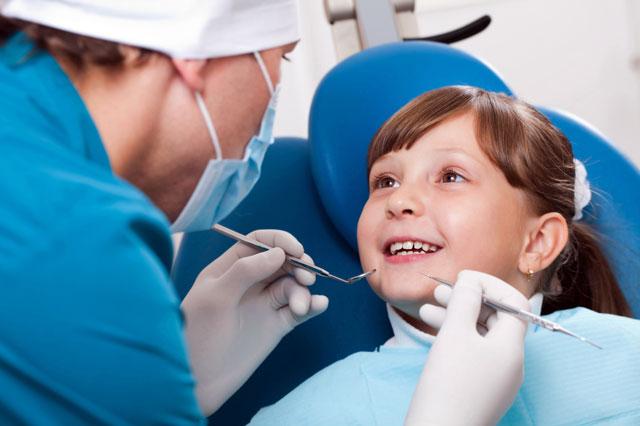You are here
Kids' cavities probably not caused by bad genes
By Reuters - Apr 27,2019 - Last updated at Apr 27,2019

AFP photo
Environmental factors appear to play a bigger role than genetics in shaping children’s risk for cavities, a study of Australian twins suggests.
Researchers followed 345 twins from 24 weeks’ gestation through six years of age, when they all had dental checkups. At age six, 32 per cent of the kids had tooth decay and 24 per cent of the children had advanced cavities.
To see how much genetics might shape the risk of cavities, researchers looked at how often both kids got cavities in pairs of identical twins — who have identical genetic variations — and fraternal twins — who typically share about half of their variations.
The risk of both siblings developing any form of tooth decay or advanced cavities was similar for identical and fraternal pairs, suggesting that genetics doesn’t explain much of the risk for these oral health problems.
“Therefore, risk factors seem to be mostly environmental and are potentially modifiable,” said lead study author Mihiri Silva of the University of Melbourne and the Murdoch Children’s Research Institute at Royal Children’s Hospital in Melbourne.
“This might debunk the idea that individuals are genetically destined to have poor teeth and should drive us to find ways of addressing the risk factors that we know are important for dental health,” Silva said by e-mail.
Worldwide, an estimated 60 to 90 per cent of school age children have tooth decay, potentially resulting in pain, infection and hospitalisation, researchers note in Pediatrics. Toothache can also result in school absence, poor nutrition, compromised growth and development and impaired quality of life for children and parents alike.
Childhood cavities are also the strongest predictor of poor oral health in adulthood, the study team writes.
While some previous research has called into question the role genetics may play in causing cavities, research to date hasn’t offered a clear picture of what role environmental or lifestyle factors might play in this risk.
In the current study, both twins had cavities in 29 pairs; in another 33 pairs of twins, just one child was affected.
Both kids had advanced cavities in 26 pairs of twins, and another 31 pairs had just one child with advanced cavities.
Three environmental factors in particular appeared to impact the risk of cavities: maternal obesity, defects in tooth enamel mineralisation, and lack of community water fluoridation.
The study wasn’t a controlled experiment designed to prove whether or how any of these factors might directly cause tooth decay or cavities.
But it’s possible maternal obesity might influence kids’ risk of oral health problems due to shared dietary or lifestyle habits in the household or biological processes that influence susceptibility to dental problems, Silva said. Obese mothers, for example, might be more likely to feed kids unhealthy food that can contribute to cavities.
Fluoridation of drinking water, meanwhile, has been proven to reduce the risk of cavities but isn’t universally available in public drinking water.
And defects in tooth enamel mineralisation that lead to weak enamel that can easily break down and form cavities may start developing in the womb and early childhood. This may be caused by certain medications taken by women during pregnancy or by children early in life, as well as by poor nutrition and certain diseases in early childhood.
The good news is environmental factors like this can be controlled to help improve oral health.
“Based on the findings from all the existing research — including ours — parents and families should focus on practicing healthy habits in general including a diet low in sugar and regular toothbrushing,” Silva advised.
Defects in enamel “can be detected and treated early to reduce problems, so ensuring children have early dental check-ups starting at one year of age can minimise problems later”, Silva added. “Our study also shows that public health initiatives like community water fluoridation continue to be important for prevention of dental caries.”
Related Articles
Even though people are born with microbes in their mouth that they inherited from their parents, these bacteria are not associated with toot
Women’s low vitamin D levels during pregnancy are linked to a higher risk of cavities in the teeth of their toddlers, according to a new study done in Canada.
Instead of having to drill and fill cavities, dentists could head them off at the pass with a new technique that accelerates a tooth’s natural healing, King’s College London announced this week.

















